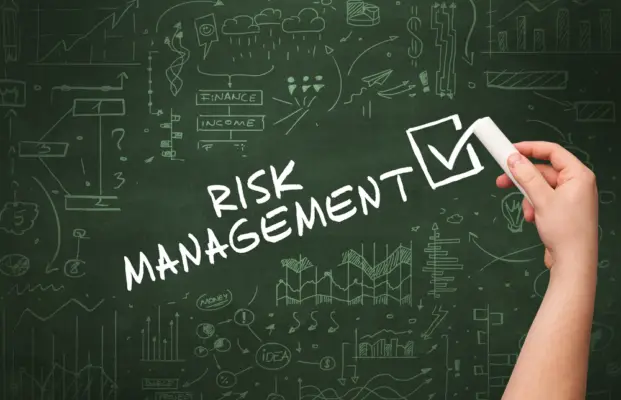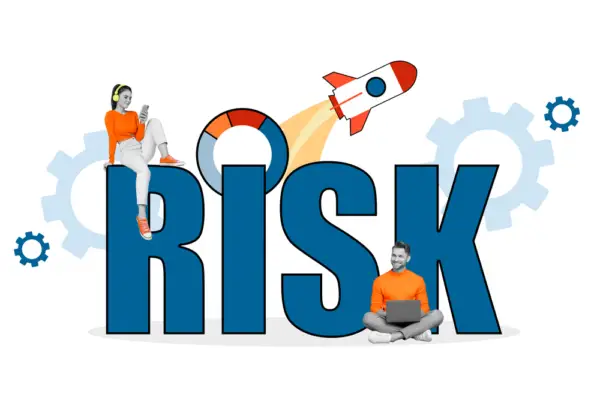Measuring risk management involves identifying potential risks in the business environment, assessing their impact on various aspects of the organization, prioritizing them for effective management, evaluating the effectiveness of risk management strategies and using metrics and models to measure success.
There are several ways to evaluate and measure risk management within an organization:
Risk Register: This document keeps track of all identified risks, their analysis, and plans for risk response. It can measure how many risks have been successfully mitigated or managed.
Risk Treatment Efficiency: Look at the effectiveness of risk treatment actions. If a certain risk was mitigated, did the action succeed in reducing the probability or impact of the risk? You can measure this by comparing the predicted impact and probability before and after the mitigation.
Key Risk Indicators (KRIs): KRIs provide an early signal of increasing risk exposure in various areas of the organization. By monitoring KRIs, you can measure how risk factors change over time and how effectively risks are managed.
Incident Reporting and Analysis: Keep track of incidents related to each risk. High incident rates may suggest poor risk management, while low rates may suggest effective risk management.
Compliance: Check the organisation’s compliance with relevant regulations, standards, or internal procedures. Non-compliance can indicate ineffective risk management.
Risk Appetite and Tolerance: Measure if the organization operates within its stated risk appetite and tolerance levels. If not, risk management may not be effective.
Risk Management Audit: Internal or external audits can review the risk management process, examining whether the correct steps were followed and whether the process is effective.
Risk Culture: A strong risk culture where employees at all levels consider risk in their daily activities and decisions is a sign of effective risk management.
In today’s fast-paced business world, risks can arise from various sources, such as economic uncertainty, natural disasters, cyber threats or changing regulatory requirements. Identifying these risks requires a systematic approach that involves analyzing internal processes and external factors that may impact the business.
Once identified, assessing the impact these risks could have on various aspects of the organization, including financial performance, reputation or employee morale, is important.
In this article, we will explore how to measure risk management effectively so that organizations can make informed decisions about managing uncertainties that might affect their prospects.

Identifying Risks in Your Business
The process of identifying potential risks in a business can be a challenging task, requiring careful analysis and assessment of various internal and external factors that may impact operations.
Risk assessment is the systematic identification, evaluation, and prioritization of risks that could negatively affect an organization’s ability to achieve its objectives.
This process involves analyzing quantitative and qualitative data to identify potential threats and their likelihood of occurrence. Mitigation planning is the next step after risk assessment.
It involves developing strategies to minimize or eliminate identified risks through preventative measures or contingency plans.
Effective mitigation planning requires collaboration across different organisational departments to cover all areas adequately. The success of these plans depends on regular monitoring, updating, and testing to ensure they remain relevant.
Identifying risks in a business is crucial for effective risk management. While this process may require significant time and resources initially, it ultimately helps businesses make better-informed decisions that promote long-term success.
Assessing the Impact of Risks
Quantifying consequences is an essential component in assessing the impact of risks.
This process allows organizations to prioritize risk management based on severity and potential impacts. Risk probability analysis is another critical tool in measuring risk management.
It involves identifying how likely certain risks will occur and determining their likelihood of causing significant harm or damage. This analysis helps decision-makers determine which risks are most urgent and need immediate attention.
Additionally, it enables organizations to allocate resources more effectively by focusing on high-risk areas. In conclusion, assessing the impact of risks is vital for effective risk management.
Consequences and conducting risk probability analyses, organizations can identify potential scenarios and understand how they may affect their business’s operations and objectives.
These tools equip decision-makers with valuable insights to make informed decisions about prioritizing resource allocation when managing risks efficiently.
Prioritizing Risks for Effective Management
Effective prioritization of potential risks is a crucial aspect of organizational decision-making, as it allows for the efficient allocation of resources towards mitigating those risks which pose the greatest threat to business operations and objectives.
The process of prioritizing risks involves identifying and assessing the likelihood and impact of each risk, as well as considering the organization’s risk appetite. A risk matrix can aid in this process by providing a visual representation that helps prioritize risks based on their likelihood and impact.
The first step in prioritizing risks is identifying an organisation’s potential risks. This can be done through various methods, such as conducting a SWOT analysis or brainstorming sessions with key stakeholders.
Once identified, each risk should be assessed in terms of its likelihood and impact using qualitative or quantitative methods.
Qualitative methods assign subjective rankings to each risk, while quantitative methods use statistical data to estimate probabilities and impacts.
In addition to assessing likelihood and impact, organizations must consider their risk appetite when prioritizing risks. Risk appetite refers to the level of risk an organization is willing to accept to pursue its objectives.
Some organizations may have a high tolerance for risk-taking, while others may be more risk-averse. Prioritizing risks within an organization’s established risk appetite ensures that resources are focused on managing those risks that align with the organization’s overall goals and values without compromising its ability to achieve them.
Evaluating the Effectiveness of Risk Management Strategies
Assessing the efficacy of an organization’s approach to mitigating potential threats requires a comprehensive evaluation of its implemented strategies and their impact on achieving desired outcomes.
To evaluate the effectiveness of risk management strategies, organizations must first focus on building a strong risk management culture where employees at all levels are aware of potential risks and are equipped with the knowledge and tools necessary to manage them.
This includes regular employee training, clear communication channels for reporting incidents or concerns, and ongoing assessment and improvement of risk management processes.
In addition to establishing a strong risk management culture, organizations must continuously review and improve their existing risk management strategies.
It also involves regularly monitoring key performance indicators (KPIs) related to risk management, such as incident frequency rates or incident response times, and adjusting strategies accordingly.
It may also involve seeking external feedback from industry experts or conducting independent audits to identify areas for improvement.
Effective evaluation of an organization’s approach to managing risks requires a commitment to continuous improvement.
Regularly reviewing KPIs related to risk management and seeking out opportunities for external feedback and audit, organizations can ensure they remain agile in the face of rapidly evolving risks while maintaining their ability to achieve desired outcomes.
Using Metrics and Models to Measure Risk Management Success
Utilizing metrics and models to evaluate the success of risk mitigation strategies is a valuable tool for organizations seeking to continually improve their approach to addressing potential threats.
Metrics provide a quantitative means of measuring the effectiveness of risk management practices, while models offer a way to simulate potential scenarios and test the impact of different strategies.
By tracking key performance indicators (KPIs) such as incident frequency, severity, and response times, companies can gain insights into where their risk management efforts are succeeding or falling short.
One important metric for measuring risk management success is the return on investment (ROI).
This involves calculating the financial benefit of implementing specific risk mitigation activities compared to the cost incurred.
Organizations can use ROI calculations to determine which activities are most effective in reducing overall risk exposure and prioritize future investments accordingly.
Benchmarking against industry peers can also help companies identify improvement areas and set KPIs targets based on best practices.
While metrics and models provide useful data points for evaluating risk management success, it’s important not to rely solely on these tools.
Human judgement and experience are critical to responding effectively to unforeseen risks or crises.
A comprehensive approach that integrates both quantitative measures and qualitative feedback can help organizations strike the right balance between minimizing risks while still achieving business objectives.

Frequently Asked Questions
What are some common mistakes businesses make when identifying risks?
One common mistake is overlooking risks that may not be immediately apparent or less significant.
For example, in the case of Volkswagen’s emissions scandal, the company failed to identify and address potential legal and reputational risks associated with using illegal software to cheat on emissions tests. This oversight led to billions of dollars in fines and damage to the brand’s reputation.
Effective risk identification requires input from various departments and stakeholders within an organization and a thorough understanding of industry regulations and best practices.
How can external factors, such as economic changes or new regulations, impact the assessment of risk impact?
External factors such as economic changes or new regulations can significantly impact the assessment of risk impact. To effectively mitigate potential risks, companies need to employ various risk assessment techniques and develop appropriate mitigating strategies.
This includes regularly monitoring external factors that could alter the nature or severity of risks faced by a company. By remaining proactive and responsive to these changes, businesses can maintain effective risk management practices and avoid costly oversights.
Consequently, businesses must know how external factors influence risk management procedures to implement successful mitigation strategies.
Are there any ethical considerations that should be considered when prioritizing risks for management?
When prioritizing risks for management, ethical implications must be taken into account. Risk prioritization methods should consider the potential impact of a risk on the organization and its ethical implications. These may include harm to stakeholders or damage to reputation.
Ethical considerations can be incorporated into risk assessments using ethical frameworks and guidelines, such as those provided by professional organizations or regulatory bodies.
Additionally, involving diverse perspectives in the risk assessment can help identify and address potential ethical issues.
How can you measure the long-term effectiveness of risk management strategies?
It is important to consider both case studies and industry benchmarks to measure the long-term effectiveness of risk management strategies.
Case studies can provide insights into how specific companies or organizations have implemented risk management strategies and their outcomes over time. This allows for a more in-depth analysis of the success or failures of particular approaches.
Additionally, industry benchmarks can compare a company’s risk management performance against others in the same field. Analyzing these benchmarks allows for identifying areas where improvements can be made and determining if current strategies effectively mitigate risks.
What are some limitations or drawbacks of using metrics and models to measure risk management success?
When measuring the success of risk management strategies, some limitations and drawbacks are associated with relying solely on metrics and models.
One potential concern is the tension between subjectivity and objectivity in risk management assessment. While metrics can provide objective data, they may not always capture the full complexity of subjective experiences or risk perceptions.
Additionally, quantitative measures may overlook qualitative aspects of risk that are difficult to quantify.
Recognizing these limitations and supplementing quantitative approaches with qualitative analysis, such as stakeholder interviews or scenario planning exercises.
Through the use of these tools, a more comprehensive understanding of the effectiveness of risk management strategies can be achieved.

Conclusion
Risk management is a crucial aspect of any business, and measuring its effectiveness is essential for success. Businesses can effectively manage risks by identifying potential risks, assessing their impact, and prioritizing them.
Evaluating the effectiveness of risk management strategies by using metrics and models is another important step in ensuring that the business remains on track.
In conclusion, measuring risk management involves systematically identifying potential risks and developing strategies to mitigate them. It requires an analytical approach to assess the impact of these risks on the business while prioritizing them for effective management.
Using metrics and models enables businesses to evaluate the overall effectiveness of their risk management strategies, providing insight into how well they are mitigating potential threats.

Chris Ekai is a Risk Management expert with over 10 years of experience in the field. He has a Master’s(MSc) degree in Risk Management from University of Portsmouth and is a CPA and Finance professional. He currently works as a Content Manager at Risk Publishing, writing about Enterprise Risk Management, Business Continuity Management and Project Management.


